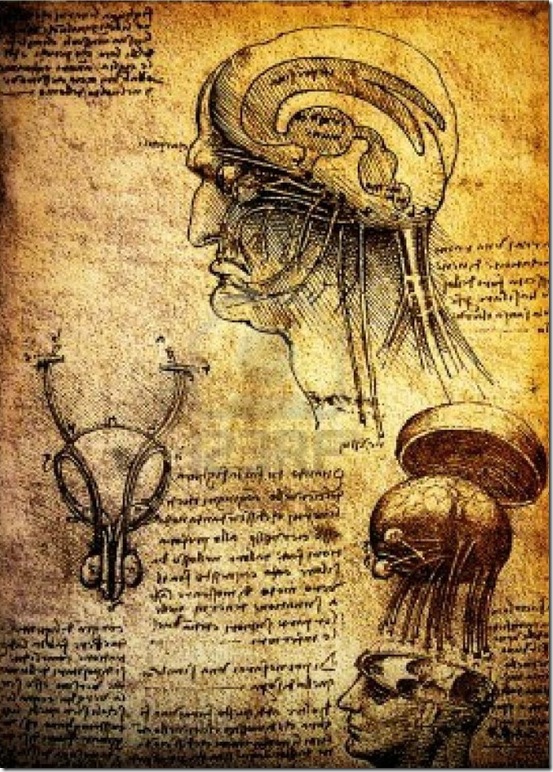By Myles Ludwig
Computo ergo sum: I compute, therefore I am. Old Monsieur Descartes would likely be writhing in his grave had he known what his defining formula for human existence has become and how irrelevant it might be coming.
I’m not suggesting that thinking, as such, will lose its place as an especially juicy characteristic of mankind (and womankind as well, of course), but we are learning that there are a variety of ways to think about thinking, and the kind of thinking itself that is might be outside the human realm.
Meta-thought, as the NSA might call it.
It applies to cats, dogs, pronghorn antelopes, elephants and probably even a bunch more species who have been previously thought (tricky word, that) to be governed only by raw behavioral instinct rather than by the vaunted powers of deductive or inductive reason, though Descartes did recognize the machine-like quality of animals.
Why does a cat find its way home? We don’t clearly understand it and we can only describe it in anthropomorphic terms (I want my milk, for example) even as we move towards computers that can be worn like a nice blue blazer and gray trousers and ultimately be discounted at Ross or TJ Maxx.
The idea of combining man and machine to create some sort of supernaturally smart creature goes back a very long way, long before Ironman 3, the RoboCop reboot, The Six Million-Dollar Man; before Oscar Pistorious, Steven Hawkings’ mecho-life and before Mary Shelley’s 19th-century Photoshop Frankenstein.
It goes back to the development of automata by the ancient Greeks, Muslim, Chinese and Hebrew scholars, French inventors and, of course Houdini.
A thread can be tracked back through the penny arcades to the notebooks of Leonardo da Vinci, who, in addition to being quite handy with a left-handed paintbrush, mastered the minutiae of anatomy in a way that led to biomechanics, as well as conceiving that guy in the circle, a flying machine, solar power and the adding machine, all, no doubt, with his head in a sfumato cloud of a now-extinct strain of Colorado Dinosaur Blue.
It goes back to Rabbi Judah Loew of Prague in the 16th century who, as legend has it, created the Golem out of clay to defend Jews against rampant anti-Semites. He’s said to have used a mystical hidden language recipe that has been passed down through the ages to our own Martha Stewart, who is keeping it as a proprietary secret.
The reality is coming closer every day.
Computer scientists have allied with biologists to develop the idea of neural networks to reveal how the brain might actually work, to connect the dots and computer chips. The point here is not to create some sort of super chess player or mind-boggling Jeopardy champ, but it will likely make the world of the Jetsons seem like that of the Flintstones.
Several months ago, I was given a demonstration of, and participated in, an experimental treatment for PTSD by Skip Rizzo, a ponytailed professor at the Institute for Creative Technologies at the University of Southern California and the leading man on the value of PTSD exposure theory. He invited me to sit in what seemed like an ordinary school chair on a slightly raised metal platform next to a laptop, strapped me into an elaborate pair of goggles, like something like a DYI Optometrist might use (with a nod to Justin Timberlake) to divine a prescription for pair of reading glasses.
Then, he clicked me into a virtual world where I was riding in a Humvee through an Afghan town, threatened by exploding IEDs, hidden snipers, what have you. The software even made the chair rumble as if it were riding on cobblestones. I could also dismount and make my way through dangerous alleyways. This was no Call of Duty, but a simulation rather like that used to train pilots, soldiers and wannabe space dates with Sandra Bullock.
I was in no real danger, but I have to admit the experience was frightening.
I could understand how the treatment for returning veterans might be able to relive some of their more terrifying experiences in a safe environment and, connected with traditional talk therapy, could be very effective in alleviating some of the symptoms of recollection that plague them.
I’m familiar with some of the work of Mark Turner at the Cognitive Sciences Department at Case Western Reserve, and last week, I read an article that referred to the exploratory work going on in the Human Brain Project, which is optimistically projected to take 10 years to get a handle on a several thousand- or even several million-year-old mechanism.
I happened to lunch with my friend, Lilia Kakaradova, a mathematical, artificial intelligence and computational science theorist in the Columbian College of Arts and Sciences at George Washington University. In addition to enjoying a very nice tom ka gai at Bangkok Joe’s, sheltered from the freezing temperatures at the foggy Washington Harbor where ice skaters were zooming around, she elaborated on the implications of the research, which might provide the missing link between man/woman and gender-neutral machines.
One of her surprising and most fascinating projections was that, with this sort of programming capability and knowledge possible, we would no longer need weapons. We could just click peace.
Norbert Weiner might have been astounded, but I think John Lennon would have been pleased.
Wouldn’t that be a nice New Year’s present?
Myles Ludwig is a media savant living in Lake Worth.
